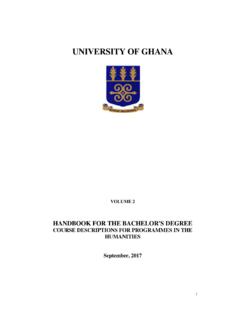Transcription of Race, Racism, and Discrimination: Bridging Problems ...
1 Race, Racism, and discrimination : Bridging Problems , methods , and Theory in social Psychological Research Author(s): Lawrence D. Bobo and Cybelle Fox Reviewed work(s): Source: social psychology Quarterly, Vol. 66, No. 4, Special Issue: Race, Racism, and discrimination (Dec., 2003), pp. 319-332. Published by: American Sociological Association Stable URL: . Accessed: 25/02/2013 14:52. Your use of the JSTOR archive indicates your acceptance of the Terms & Conditions of Use, available at .. JSTOR is a not-for-profit service that helps scholars, researchers, and students discover, use, and build upon a wide range of content in a trusted digital archive.
2 We use information technology and tools to increase productivity and facilitate new forms of scholarship. For more information about JSTOR, please contact . American Sociological Association is collaborating with JSTOR to digitize, preserve and extend access to social psychology Quarterly. This content downloaded on Mon, 25 Feb 2013 14:52:03 PM. All use subject to JSTOR Terms and Conditions social PsychologyQuarterly 2003,Vol. 66,No. 4,319-332. Race, Racism, andDiscrimination: BridgingProblems, methods ,andTheoryin SocialPsychological Research*. LAWRENCE D. BOBO. CYBELLE FOX.
3 HarvardUniversity Scholarsspanningthesocialsciencesand They immediatelyentail the labeling and humanitieswrestlewiththe complex and social learningof groupcategories,identity, oftencontestedmeaningsofrace, Racism, and feelings, beliefs,and relatedcognitivestruc- all of thisenterprise, soci- factors, in turn,are expressedin ologistsrightlyretaina specialclaimto illu- lines of interactionand behaviorthatflow minating processes of group boundary from,reinforce and reconstitute, or come to maintenance, systems ofracialinequalityand transformthose social supporting ideologies,and attendant patterns addition,such categorizationshave direct of intergroup behavior (Jackman 1994; implications forthestructure and basic con- Lamont 2000).
4 Mainstream sociological ditionsof social organization. That is, Race, 1. research,however, has focusedprincipally on Racism, 2and discrimination3 are also, and thestructural manifestations of Race, racism, perhaps most fundamentally, bases and and discrimination ,particularly as theychar- mechanismsof hierarchicaldifferentiation acterizeblack-white relations(Wilson1978). thatshape theorderingof socialrelationsas Sociologistshave made signalcontributions wellas theallocationof lifeexperiencesand to the understanding of modernghettojob- lifechances(Zuberi2001a). lessnessand poverty(Wilson1996),of racial residentialsegregation(Masseyand Denton 1 We conceiveof Race, or morebroadlyethnoracial 1993),andoffundamental disparitiesin accu- distinctions, as historically contingentsocial construc- mulatedwealth(Oliverand Shapiro1995).
5 In distinctionsor categorizationswillvaryin configurationand salience over time (Collins 2001;. somecriticalrespectsthisworkhas expanded Omi 2001) as well as by important intersectionswith to includemultiracialand multiethnic com- age, class, gender, and sexuality (Cohen 1999). parisonswithrespectto bothkey economic Similarly,the practices and policies of government (Lichter and Oliver 2000; Smith 2001; play a major role in the understandingand social Waldinger1996) and residentialoutcomes effectsof these categories (Nobles 2000). Although such categorization may invoke consideration of (Charles 2001; Emerson,Yancey,and Chai physicaland biological markerssuch as hair texture, 2001).
6 To a surprising degree,however,the skin tone and color, and other observable markers, microsocialprocessesnecessarily embedded neithertheseindicianordeep primordialimperatives in these structuralanalysesare stilllargely give ethnoracialcategoriestheirsocial significance. 2 We conceiveofracismas a set ofinstitutional con- unaddressed. ditionsof group inequalityand an ideologyof racial Yet thebasicsocialprocessesinvokedby domination,in whichthe latteris characterizedby a thetermsrace, Racism, and discrimination are set ofbeliefsholdingthatthesubordinateracial group quintessentiallysocial psychologicalphe- is biologicallyor culturallyinferiorto the dominant nomena.
7 Sociologists ignoreor downplaythis racial beliefs,in turn,are deployed to prescribe and legitimize society's discriminatory basic insightat the discipline' treatmentof the subordinate group and to justify concepts concern the meanings of social theirlowerstatus(See and Wilson1989;Wilson1973). groupingsand how thosemeaningscome to 3We thinkof discrimination as a "complex system guidepatternsofrelationsamongindividuals of social relations"(Pettigrewand Taylor 1990:688). actions,subtleor overt,"thatserve to limit recognizedas membersof particulargroups. involving the or economic social ,political, of opportunities par- ticular groups" (Fredricksonand Knobel 1982:31).
8 * Direct correspondence to Lawrence D. Bobo, Discriminationmay be eitherdirector indirect,and Department of Sociology, Harvard University, may have both short-and long-termconsequences Cambridge,MA (Pettigrewand Taylor1990). 319. This content downloaded on Mon, 25 Feb 2013 14:52:03 PM. All use subject to JSTOR Terms and Conditions 320 social psychology QUARTERLY. For thesereasons,sociologistsand social To further advancethe impetustoward psychologists of several stripes have devoted " Bridging ," thisspecialissuenowunitesthree greatenergyto unraveling "the problemof goals in seekingto increasesocial psycholo- race.
9 "4 Yet broadand powerful generaltheo- gy's understandingof processes of race, ries of Race, Racism, and discrimination still Racism, and discrimination . One keygoal of eludeus (See andWilson1989;Winant2000). thisvolumehas been to encouragebridges social psychologists, some argue,have been acrossmajorsubareas, methods , and theories. slowto examinehowethnoracial distinctions The challengeofbuildingmoregeneraltheo- mayinfluencewhathave been regardedas rywillbe metonlyinsofaras studiesacross otherwise general social psychological an array of "middle range" theories are processes(Huntet al.)
10 2000).Certainly thelit- broughtintodirectdialogueon the various eraturecontainsa numberof distinctand Problems , questions,and methodsofanalysis vital clustersof intellectualactivity:some that typically distinguish and organize focuson Problems ( ,minority statusand domainsofsocialresearch. performancein school), some on method A second goal has been to encourage ( ,surveysof racialattitudes),and others work of multiethnic scope. More and more on theory( ,statusexpectationstatesthe- research is not only reachingbeyond the ory).One consequenceis thatthefieldis not so muchbalkanizedas composedof several black-white divide but also adoptinga strate- disparate,mutuallyinsularintellectualcom - gy of simultaneous and richmultigroup com- munities.












